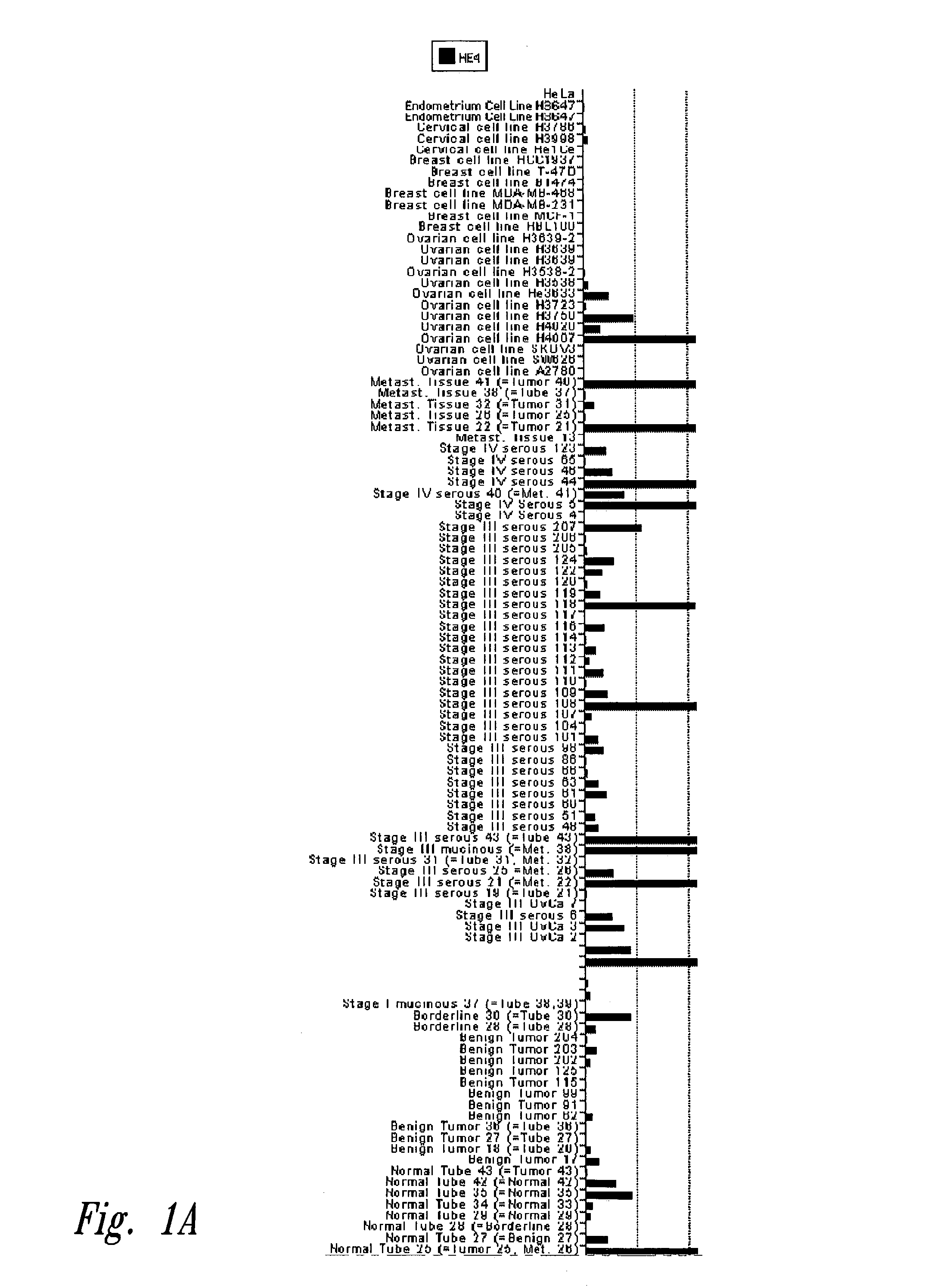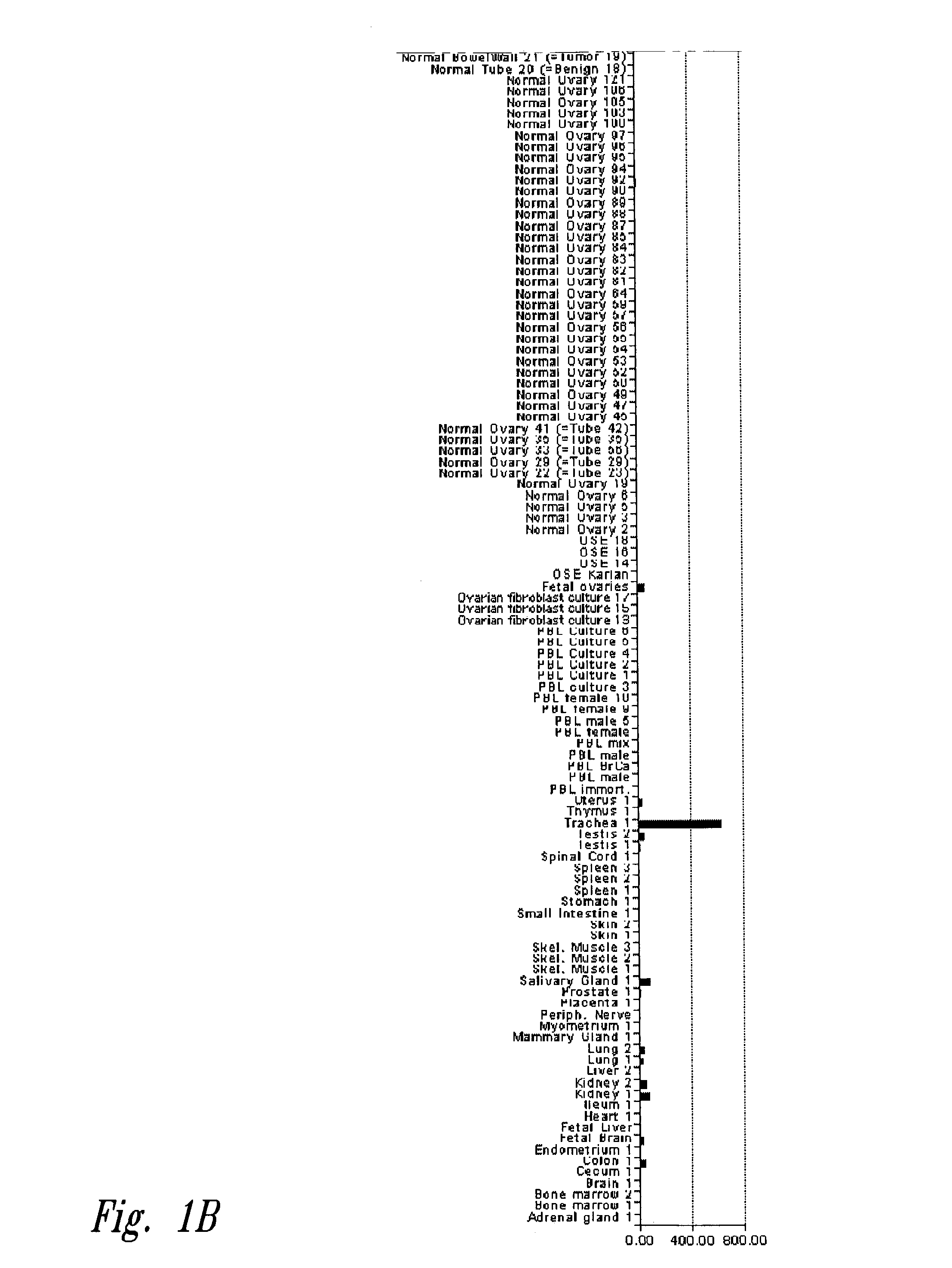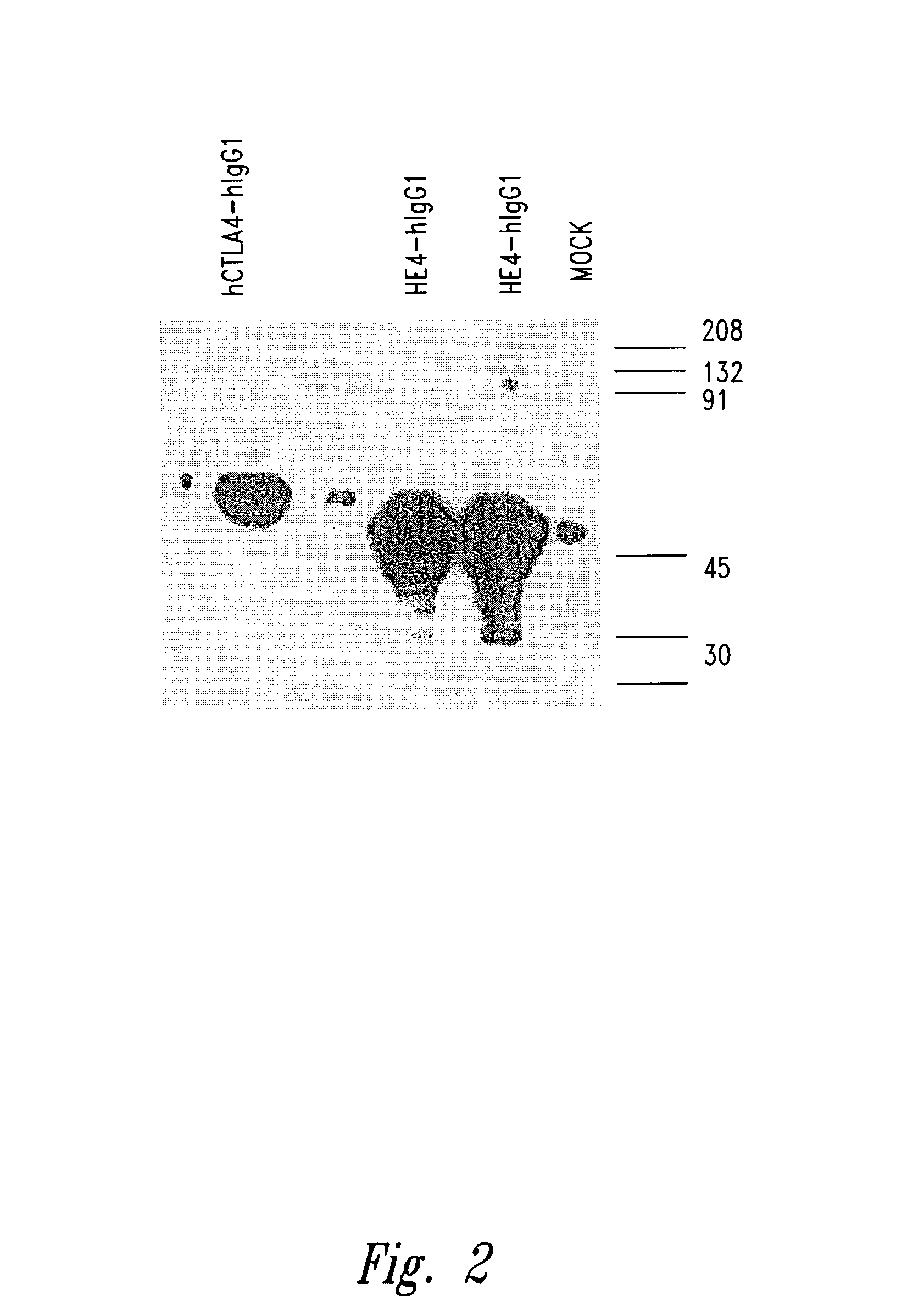Diagnosis of ovarian carcinomas
a technology for ovarian cancer and diagnosis, applied in the field of malignant conditions, can solve the problems of limited diagnostic screening usefulness, need for early detection and diagnosis, and detection of cell-associated tumor markers
- Summary
- Abstract
- Description
- Claims
- Application Information
AI Technical Summary
Benefits of technology
Problems solved by technology
Method used
Image
Examples
example 1
Real-Time PCR Detection of HE4A Expression in Human Samples
[0126]One hundred and fifty-eight human tissue biopsies, or RNA samples from biopsies, were obtained according to the procedures approved by the institutional review boards of the University of Washington, Swedish Hospital and Fred Hutchinson Cancer Research Center, all of Seattle, Wash. Samples from normal tissues (adrenal gland, bone marrow, brain, colon, endometrium, stomach, heart, kidney, liver, lung, lung, mammary gland, skeletal muscle, skeletal muscle, myometrium, peripheral nerve, peripheral blood lymphocyte preparations, salivary gland, skin, small intestine, spinal cord, spleen, spleen, trachea, thymus, uterus, peripheral blood lymphocyte cluture, and 40 normal ovaries), from benign ovarian lesions (13 serous cystadenomas), from 2 ovarian tumors of borderline malignancy, from 3 stage I mucinous ovarian carcinomas, 3 stage I serous ovarian carcinomas, 37 stage III serous ovarian carcinomas, 7 stage IV serous ovaria...
example 2
Cloning and Expression of Nucleic Acid Sequences Encoding HE4A
[0134]Amplification of HE4a fusion construct cDNA from high throughput HE4a cDNA clone: The cDNA sequence for HE4 (SEQ ID NO:8) as originally published by Kirchoff et al., (1991) was deposited in GenBank Accession # X63187 and provided the basis for oligonucleotide primer design to clone cDNA encoding HE4a (SEQ ID NO:10), as described herein. The cDNA for HE4a, identified and isolated as a differentially expressed gene product using high throughput cDNA arrays, was cloned in pSPORT as an 840 base pair fragment. This cDNA was used as template in PCR reactions to amplify HE4a in a form appropriate for creating synthetic fusion protein genes, as described in this Example.
[0135]A portion of the HE4 coding sequence (SEQ ID NO:8) appeared to encode a presumed secretory signal peptide; therefore, this native leader peptide was used in initial constructs to preserve as much of the molecule's structure as possible. In addition, be...
example 3
Monoclonal Antibodies Specific for HE4A
[0148]Generation of anti-HE4a Mabs. In initial experiments, several BALB / c mice were immunized with HE4a-hIgG fusion proteins prepared as described above, with and without adjuvant. Although high antibody titers were seen in these mice, the antibodies were not specific for HE4a, since equally high titers were seen against a control fusion protein having the hIgG tail (CTLA4-hIg fusion). Therefore, HE4a-mIgG fusion protein was used for immunization. FIG. 3 illustrates the results from two immunizations that led to high titered antibodies against HE4a in two BALB / c mice (1605 and 1734) that were each twice immunized with HE4a-mIgG plus adjuvant (TiterMax®, CytRx Corp., Norcross, Ga.) according to the manufacturer's instructions, given subcutaneously in the tail. HE4a-specific hybridomas were prepared by standard methodologies using spleen cells from mice exhibiting high HBE4a-specific antibody titers. FIG. 4 shows the initial testing, by ELISA, o...
PUM
| Property | Measurement | Unit |
|---|---|---|
| Time | aaaaa | aaaaa |
| Biological properties | aaaaa | aaaaa |
| Affinity | aaaaa | aaaaa |
Abstract
Description
Claims
Application Information
 Login to View More
Login to View More - R&D
- Intellectual Property
- Life Sciences
- Materials
- Tech Scout
- Unparalleled Data Quality
- Higher Quality Content
- 60% Fewer Hallucinations
Browse by: Latest US Patents, China's latest patents, Technical Efficacy Thesaurus, Application Domain, Technology Topic, Popular Technical Reports.
© 2025 PatSnap. All rights reserved.Legal|Privacy policy|Modern Slavery Act Transparency Statement|Sitemap|About US| Contact US: help@patsnap.com



